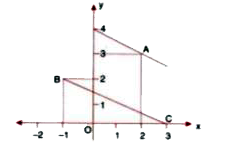Write down the equation for the excess pressure when a wave propagates through a medium.
To derive the equation for the excess pressure when a wave propagates through a medium, we can follow these steps:
Step 1: Understand the Concept of Excess Pressure
Excess pressure, denoted as Δp, refers to the change in pressure in a medium due to the propagation of a wave. This change occurs as the wave travels through the medium, causing compressions and rarefactions.
Hint: Remember that excess pressure is related to the fluctuations in pressure caused by the wave motion.
Step 2: Identify the Parameters in the Equation
The equation for excess pressure can be expressed as:
Δp=B⋅A⋅k⋅sin(ωt−kx+ϕ)
Where:
- B = Bulk modulus of the medium (a measure of the medium's resistance to compression)
- A = Amplitude of the displacement wave (the maximum displacement from the equilibrium position)
- k = Wave number (given by k=2πλ, where λ is the wavelength)
- ω = Angular frequency of the wave (related to the frequency f by ω=2πf)
- ϕ = Initial phase of the wave (the phase at time t=0)
Hint: Familiarize yourself with the definitions of each parameter to understand their roles in the equation.
Step 3: Recognize the Constants
The product B⋅A⋅k is a constant, which can be denoted as Δp0 (the amplitude of the pressure wave). This represents the maximum change in pressure when the sine function reaches its maximum value of 1.
Hint: The maximum value of a sine function is 1, which simplifies the understanding of the amplitude in wave equations.
Step 4: Simplify the Equation
We can simplify the equation for excess pressure by substituting Δp0 into the equation:
Δp=Δp0⋅sin(ωt−kx+ϕ)
This form highlights that the excess pressure varies sinusoidally with time and position.
Hint: Recognize that this sinusoidal form is typical for wave equations, indicating periodic behavior.
Final Equation
Thus, the final equation for the excess pressure when a wave propagates through a medium is:
Δp=Δp0⋅sin(ωt−kx+ϕ)
Excess pressure, denoted as Δp, refers to the change in pressure in a medium due to the propagation of a wave. This change occurs as the wave travels through the medium, causing compressions and rarefactions.
The equation for excess pressure can be expressed as:
Δp=B⋅A⋅k⋅sin(ωt−kx+ϕ)
Where:
- B = Bulk modulus of the medium (a measure of the medium's resistance to compression)
- A = Amplitude of the displacement wave (the maximum displacement from the equilibrium position)
- k = Wave number (given by k=2πλ, where λ is the wavelength)
- ω = Angular frequency of the wave (related to the frequency f by ω=2πf)
- ϕ = Initial phase of the wave (the phase at time t=0)
The product B⋅A⋅k is a constant, which can be denoted as Δp0 (the amplitude of the pressure wave). This represents the maximum change in pressure when the sine function reaches its maximum value of 1.
We can simplify the equation for excess pressure by substituting Δp0 into the equation:
Δp=Δp0⋅sin(ωt−kx+ϕ)
This form highlights that the excess pressure varies sinusoidally with time and position.
Thus, the final equation for the excess pressure when a wave propagates through a medium is:
Δp=Δp0⋅sin(ωt−kx+ϕ)
Topper's Solved these Questions
- WAVESBOOK - ICSECHAPTER - WAVESEXERCISE - Superposition Of Waves, Beats, Stationary Waves
55 Videos
- WAVESBOOK - ICSECHAPTER - WAVESEXERCISE - Doppler Effect, Musical, Sound, Noise
26 Videos
- WAVESBOOK - ICSECHAPTER - WAVESEXERCISE - Long Answer Questions
16 Videos
- VECTORS SCALARS ELEMENTARY CALCULUS BOOK - ICSECHAPTER - VECTORS SCALARS ELEMENTARY CALCULUS EXERCISE - UNSOLVED PROBLEMS
79 Videos
Similar Questions
Knowledge Check
Which of the following statements are true wave motion? a) Mechanical transverse waves can propagate through all mediums. b) Longitudinal waves can propagate through solids only c) Mechanical transverse waves can propagate through only d) Longitudinal waves can propagate through vacuum.
AMechanical transverse waves can propagate through all mediums.BLongitudinal waves can propagate through solids onlyCMechanical transverse waves can propagate through onlyDLongitudinal waves can propagate through vacuum.
Write down the equation for the work done in rotatory motion.
View SolutionObtain an expression for the volume strain in a medium when a longitudinal wave propagates through the medium.
View SolutionWrite down the differential equation of a plane progressive wave.
View SolutionWrite down the wave equation in four different forms.
View SolutionIn the following diagram, write down :

the equation of the line through A and parallel to BC.
View SolutionName the properties which a material medium should have in order that a wave propagates through it.
View SolutionWrite down the relation connecting the pressure and temperature of a gas if volume is kept constant.
View Solution

